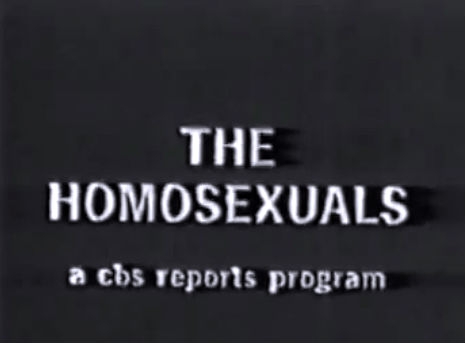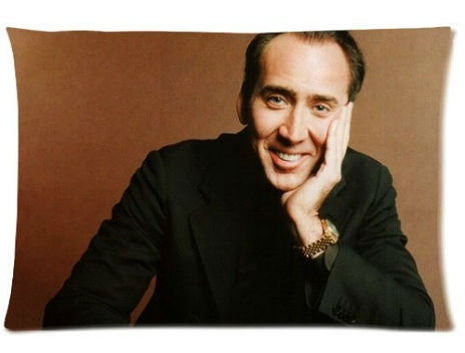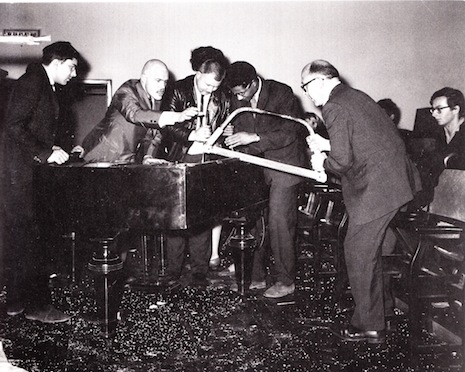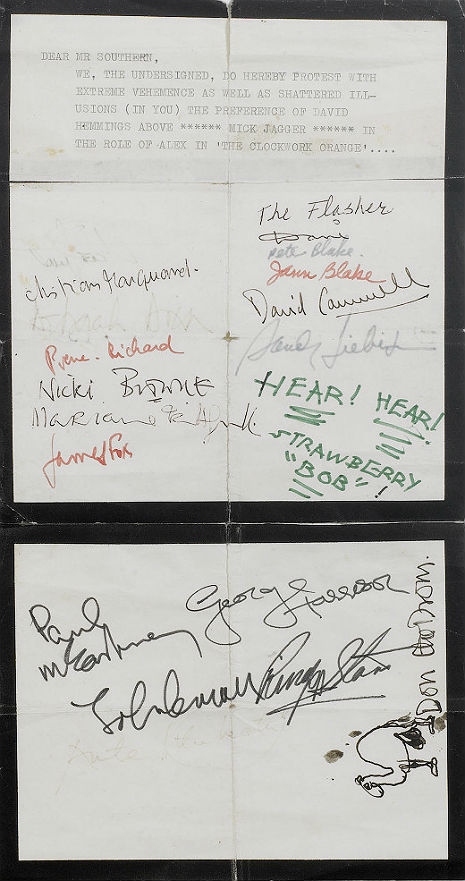
In 1967 Mike Wallace hosted a controversial CBS TV documentary titled The Homosexuals. Part of CBS Reports, a precursor to 60 Minutes, the program marked the very first time the topic of homosexuality had been broached on a national television news show (there was an earlier local San Francisco PBS program called The Rejected from 1961, which featured anthropologist Margaret Mead ). It went through two producers and several iterations over the course of three years before it finally aired on March 7.
At the time the show was made, nine of every ten Americans saw homosexuality as an illness or a disease and as a social problem worse than prostitution, abortion and adultery. A majority of the country believed homosexual acts done in private between two consenting adults should be illegal and punishable by law.
As you might expect, there are several cringe-worthy elements in the film, although the intentions on the part of the original producer seemed good-ish, or at least educational. The inclusion of Dr. Charles Socarides, the psychoanalyst who is widely regarded as the father of “conversion therapy” is one of the first red flags of “balance,” but Socarides was a man taken very seriously at the time. (Worth noting that his openly gay son, Richard Socarides, was a top adviser to Bill Clinton.) Dr. Irving Bieber, another prominent “expert” of the day who viewed homosexuality as a pathology brought on by over-protective mothers (and absent or competitive fathers) is also given screen time. Socarides and Bieber both come off very poorly in hindsight, like fatuous “experts” who don’t know what they’re talking about. At all. History will not be kind to either of their reputations.
One of the interviewees, a 27-year-old gay man who has his face obscured by a plant, is described as someone facing LIFE IN PRISON should he be arrested again for attempting sexual gratification. He seems himself to believe that he is sick.
Mike Wallace’s disapproving commentary is indicative of what attitudes towards homosexuality were like at the time:
The average homosexual, if there be such, is promiscuous. He is not interested or capable of a lasting relationship like that of a heterosexual marriage. His sex life, his love life, consists of a series of one–chance encounters at the clubs and bars he inhabits. And even on the streets of the city — the pick-up, the one night stand, these are characteristics of the homosexual relationship.
The legendary CBS newsman Fred Friendly (who famously worked with Edward R. Murrow to cut Joseph McCarthy down to size) was the exec in charge of the special and asked the producer William Peters to add in something explaining to the viewers what it was that homosexuals actually did. When the mechanics of gay sex was explained to Friendly, the veteran journalist quickly changed his tune.
Jack Nichols, the prominent early gay rights activist and co-founder of the Washington DC-based branch of the Mattachine Society appeared in the program under the pseudonym “Warren Adkins” due to the fact that his father was an FBI agent and would have lost his security clearance. When he’s asked about his sense of self, he answers eloquently:
I have thought about it, but it really doesn’t concern me very much. I never would imagine if I had blond hair that I would worry about what genes and what chromosomes caused my blond hair, or if I had brown eyes… My homosexuality to me is very much in the same category. I feel no more guilt about my homosexuality or about my sexual orientation than a person with blond hair or with dark skin or with light skin would feel about what they had.”
Friendly left CBS News over an argument about the Vietnam War and the film looked like it wouldn’t air, except that there was already some news reports about the hot potato film that had been in baking since 1964. Friendly’s successor there, Richard Salant, thought that the doc was too pro-homosexual and hired another producer, Harry Morgan, to redo it, practically from scratch. All but ten minutes of the original edit were dropped. Interviews where the subjects were previously portrayed as happy about themselves were re-edited to mislead the audience into coming to the exact opposite conclusion.
Some of the participants were furious when the show was aired. Jack Nichols was fired from his job the very next day. He later had this to say about his encounter with Mike Wallace:
[A]fter we finished and the camera was turned off, Mike Wallace sat down with me and talked for about half an hour. He said, “You know, you answered all of my questions capably, but I have a feeling that you don’t really believe that homosexuality is as acceptable as you make it sound.” I asked him why he would say that. “Because,” he said, “in your heart I think you know it’s wrong.” It was infuriating. I told him I thought being gay was just fine, but that in his heart he thought it was wrong.
Wallace, as late as 1995, was publicly saying that he thought people could chose not to be gay.
This is a mixed bag to be sure, but it’s a FASCINATING mixed bag from start to finish. The bathroom sting footage, the undercover cinéma vérité camerawork. The wonderfully open-minded Rev. Robert Bruce Pierce (at about 24:30 minutes in) who says that he knows that it is wrong when he feels uncomfortable around gays and tries to CHANGE HIMSELF. Don’t miss the amazing segment that begins at 32:00 with biographer Albert Goldman and Gore Vidal debating the notion of a “gay mafia” in the arts. Goldman sees homosexuality as one of several factors that would bring about “the final erosion, of our cultural values.” Vidal, on the other hand, says “The United States is living out some mad Protestant nineteenth-century dream of human behavior….I think the so-called breaking of the moral fiber of this country is one of the healthiest things that’s begun to happen.”
You’ll notice that there are no lesbians represented in the program. It was thought that including ladies who love ladies would have only served to confuse Mr. and Mrs. America
Previously on Dangerous Minds:
Ask a Homosexual: Historically important call-in TV show from 1972
Posted by Richard Metzger
|
09.27.2013
07:26 pm
|



















